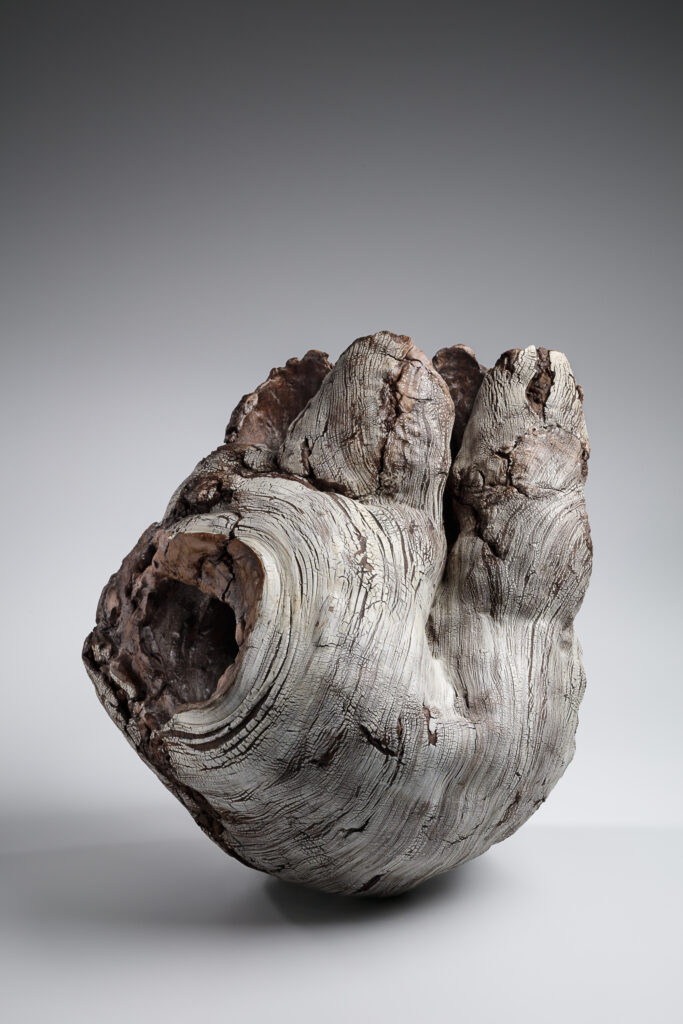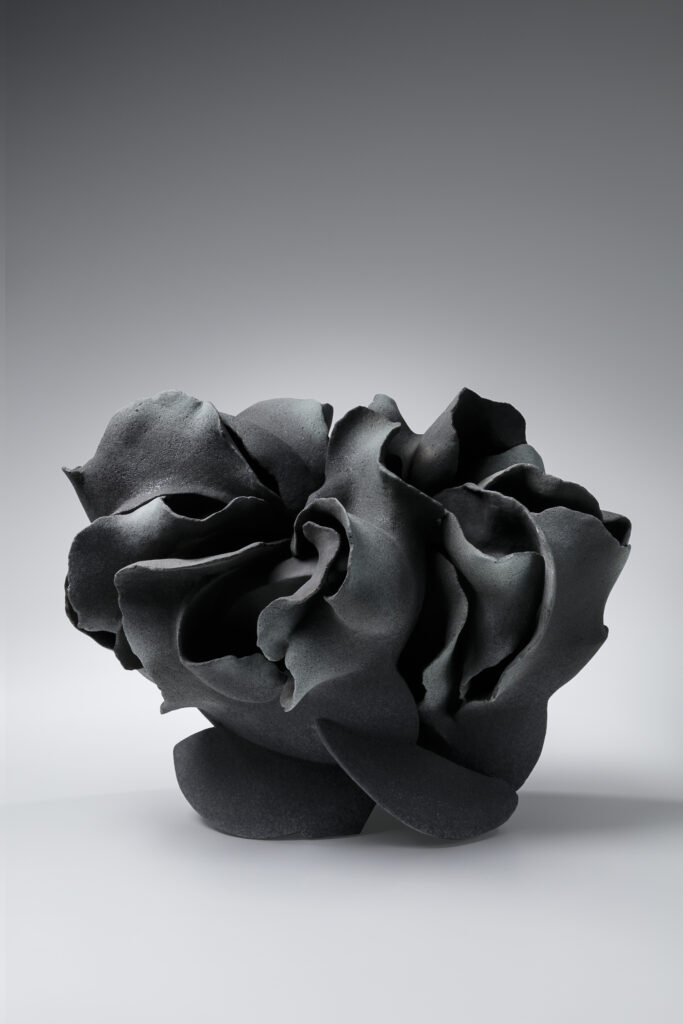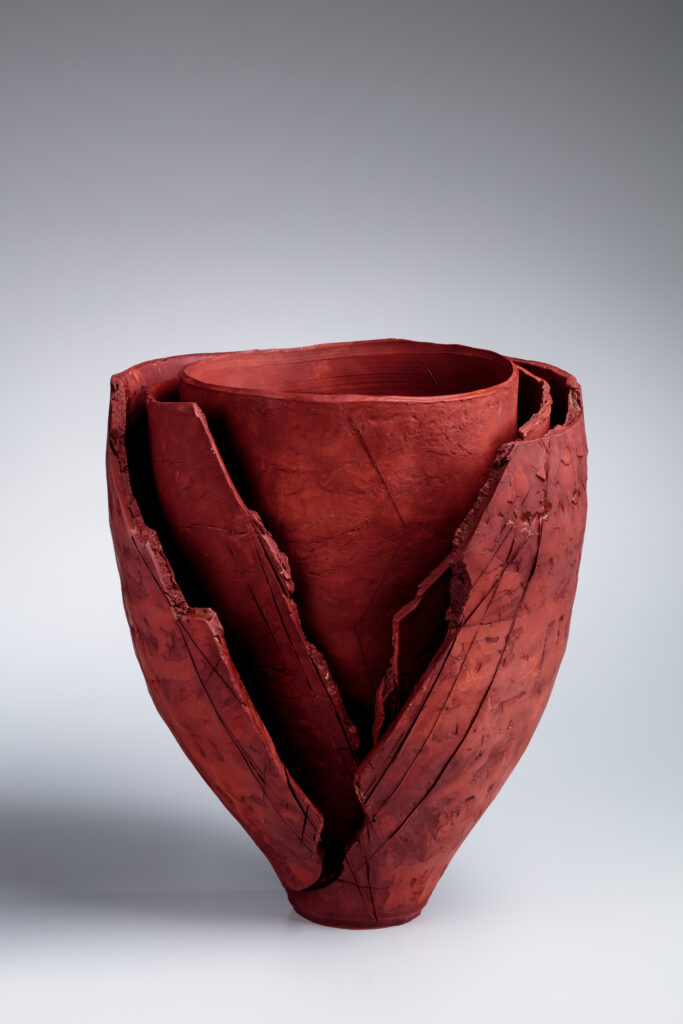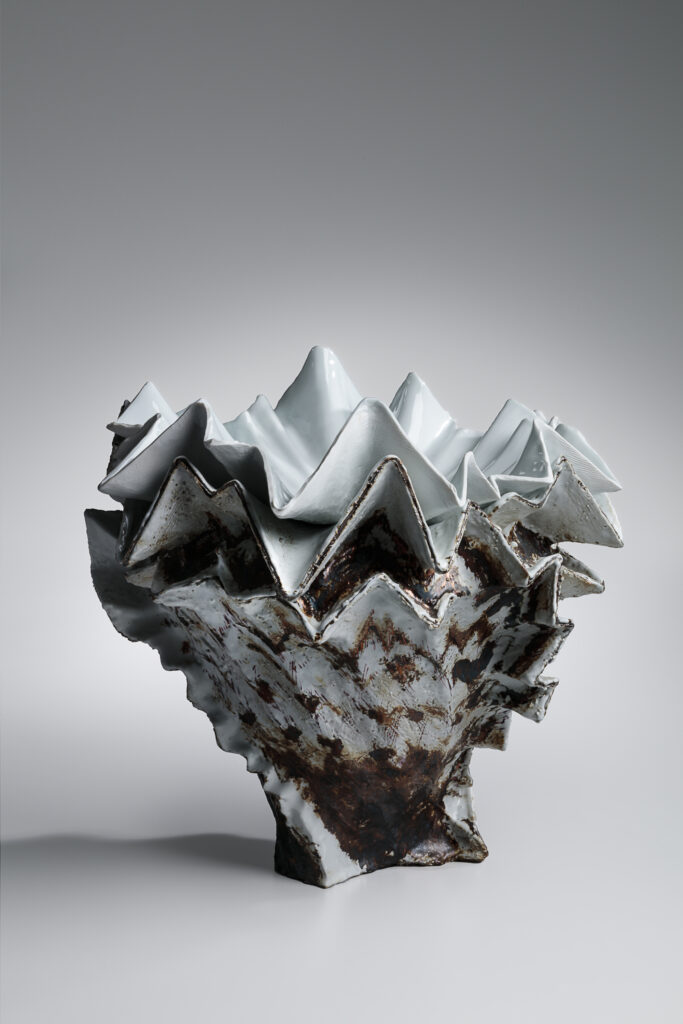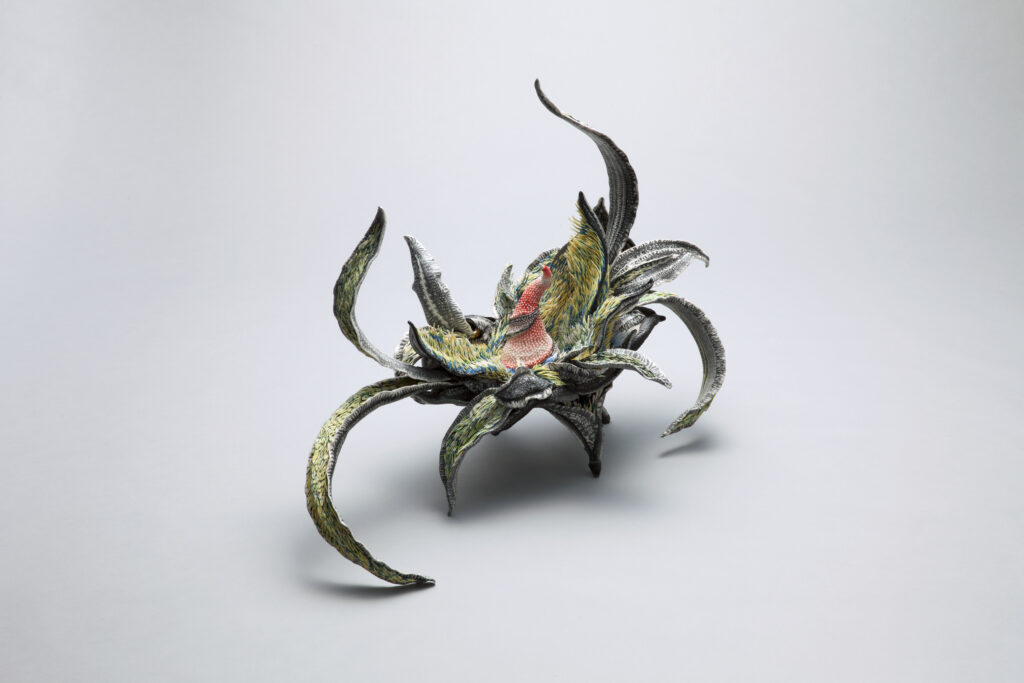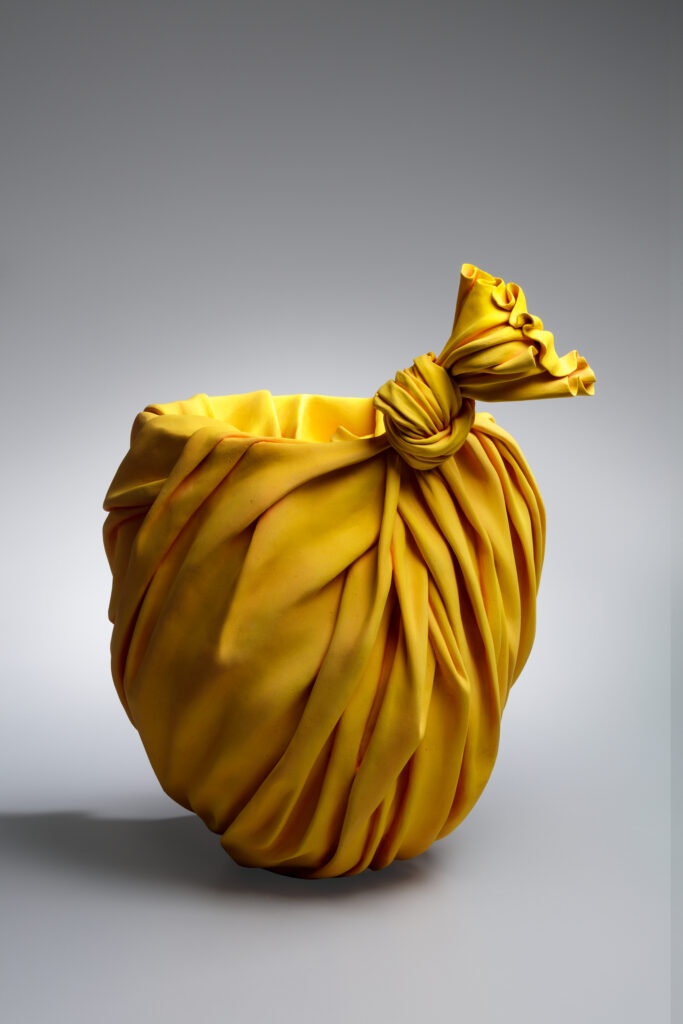
Tanaka Yu 田中悠. Bag Work (フクロモノ), 2018. Carol & Jeffrey Horvitz Collection of Contemporary Japanese Ceramics.
With the wealth of exhibitions and publications on the topic of female design, it is becoming more and more apparent that women want to create art not simply as women, but as artists. As I recently heard Marina Abramovic say in a podcast, “I am creating as an artist; not as a woman.” Women artists tend to tackle universal themes of activism, relationships, politics, and sometimes gender. The placement of women as the central theme has become irrelevant, particularly today, as the conversation around design has grown increasingly global, cross-disciplinary, and multifaceted. However, there are always interesting aspects that we can learn about the reality women experience in the arts—including their stories and achievements. The Art Institute of Chicago has opened the show Radical Clay: Contemporary Women Artists from Japan, which presents works by 36 different women artists from across Japan, exploring the innovation and creativity within the realm of Japanese kogei (crafts) today. Here we can learn about the unique reality of female ceramicists working in Japan in a craft that in the past was exclusively for men. To me, any exposure to Japanese contemporary arts/crafts is a celebration, as the limited attention paid by Western audiences—like mainstream media, auction houses, and collectors—to the extraordinary production of Japan’s kogei tradition made it a rare occasion for most Americans.
All pieces on view come from the collection of Boston-based collectors Carol and Jeffrey Horvitz, who have contributed tremendously to the exposure and advancement of the knowledge of Japanese contemporary clay art in the US. Horvitz, whom I hosted in my series Collecting Design a couple of years ago, has demonstrated that connoisseurship can be achieved through only focus, ambition, passion, efforts, and refined selection; as together with his wife, he created the world’s best private collection of its kind. Since 2008, the two have been on a journey into the world of Japanese contemporary clay art, and they have since achieved the taste and knowledge required to form a collection of the highest caliber.
What happened in the realm of Japanese ceramics in the past two decades is a spectacular transformation which turned the traditional craft of fired clay into provocative, innovative, surprising contemporary art. While its application in tea ceremonies that dates back thousands of years has been the core inspiration for the new generation of ceramicists, they have turned clay and glazes into masterpieces of cutting-edge fine art. Individuality, innovation, and fresh thinking have become synonymous with the contemporary Japanese ceramics. The exhibition Radical Clay: Contemporary Women Artists From Japan demonstrates that women have come to dominate in a field previously practiced exclusively by men, and they are now making contributions to the pantheon of Japanese kogei by pushing the limits of the medium through daring experimentation and new thinking. In the past, ceramic arts were passed from generation to generation, and was practiced exclusively for functional objects. Today, the educational backgrounds of art schools and living abroad has enabled the practicing artists represented in the show to propose new ways that are integral to the contemporary art scene.
The illustrated catalogue contains essays that illuminate various aspects of the way in which female ceramicists have turned the conventional clay into unconventional artistic expressions, while also presenting a wealth of narratives. I particularly enjoyed the essay “From the Shadows, Into the Spotlights” by Janice Kats in which she explores the history of collecting and the presentation of Japanese clay art in American museums. The catalog is a useful resource to learn about the artists and their journey into finding their own voices in the field and to understand what makes their work important, significant, and groundbreaking.
While I was not convinced that there is an innate sense of ‘femininity’ in the works by participating artists, I remain intrigued. Last summer I went to Japan on a journey of discovery—traversing rivers, forests, and mountains to reach the small towns where a number of intriguing and talented kogei artists live and work amid some of the country’s most historic and renowned craft regions. This show has inspired me to consider my next journey.

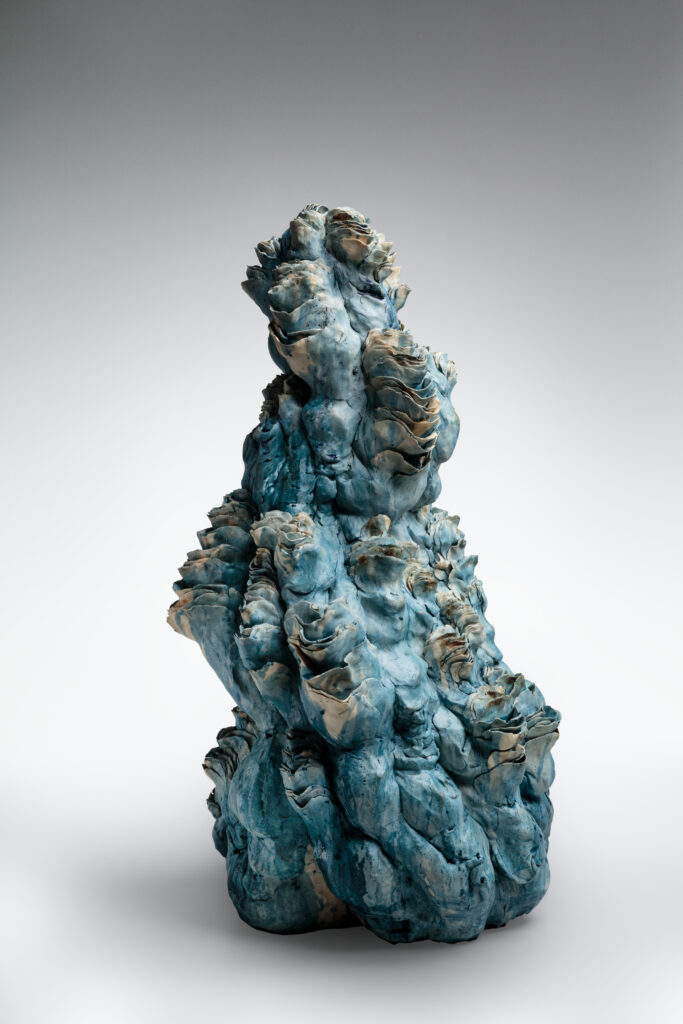
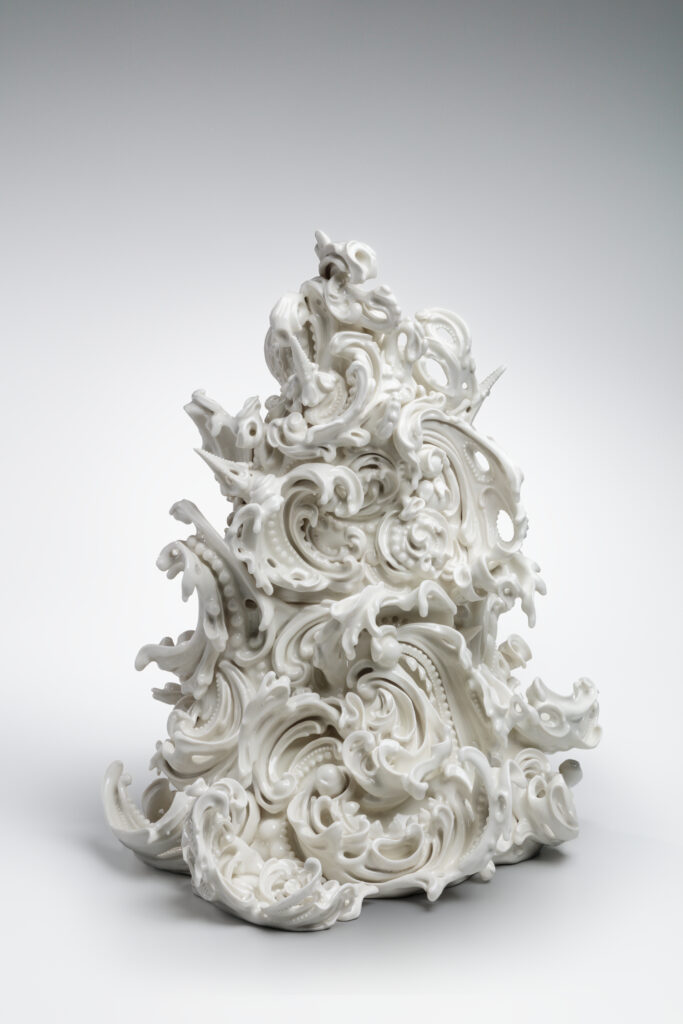
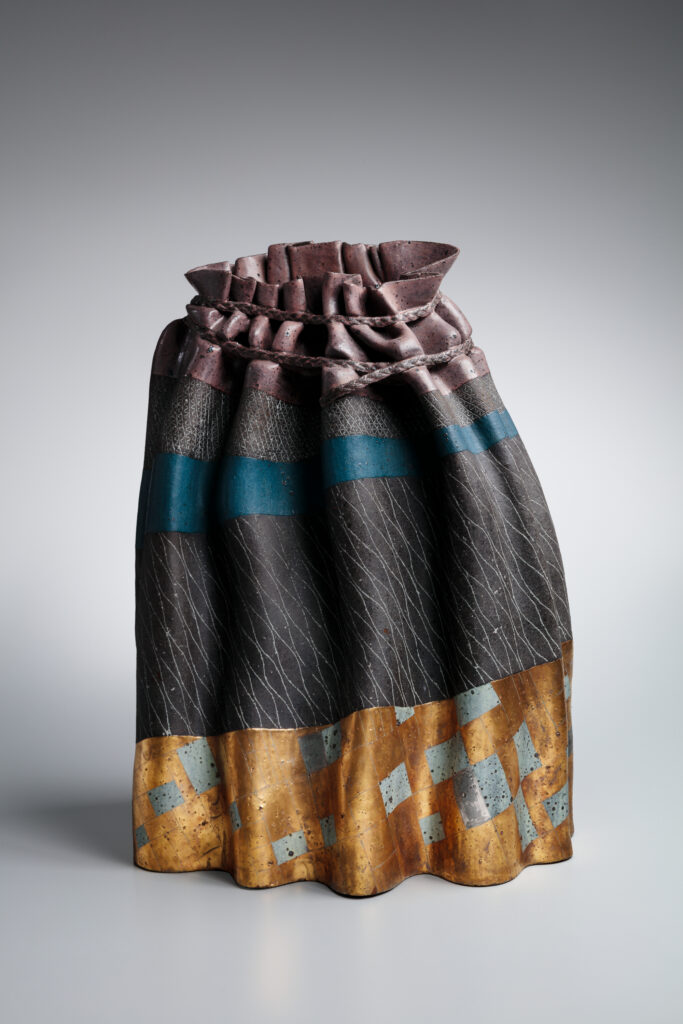
Tsuboi Asuka 坪井明日香. Chinese-Brocade Ancient Skirt (唐織 裳), 2017. Carol & Jeffrey Horvitz Collection of Contemporary Japanese Ceramics.
